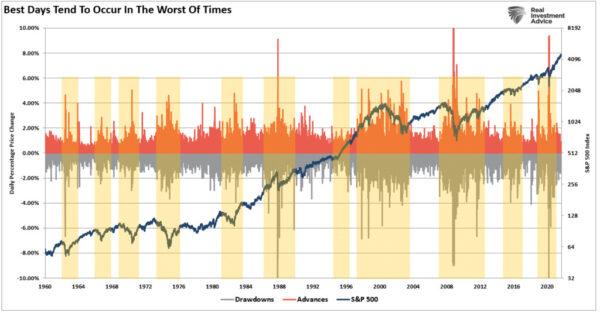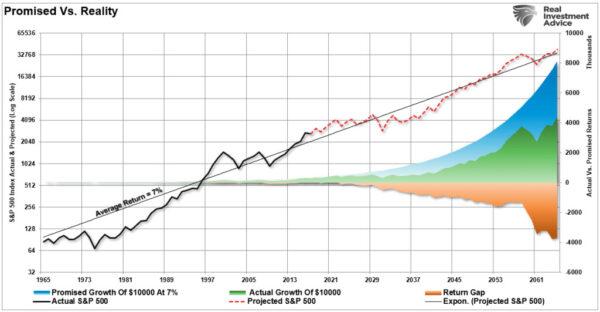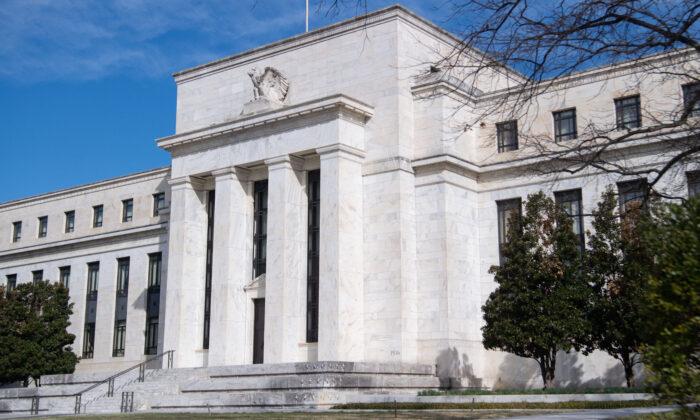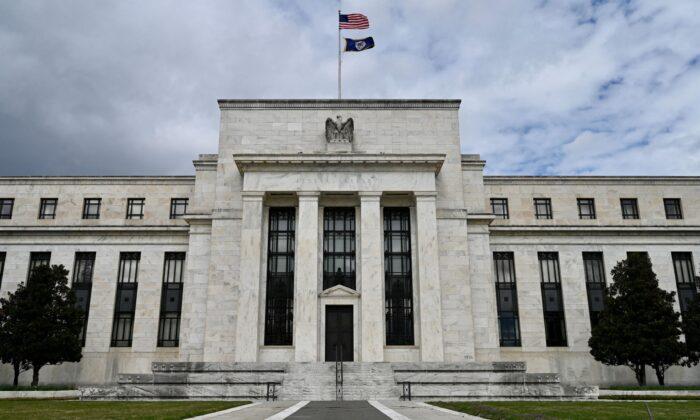“So-called experts are telling us about the coming uber-bear or why the bull market will continue. Yet the data show that predicting the market’s direction to time buys and sells is the wrong approach to investing.
“Data from the last seven bear markets show that many losses and gains happen in concise periods, requiring timers to have uncanny accuracy and resolve. Investors are better served to ignore market calls and follow the time-tested practice of holding well-diversified portfolios that meet their goals across long market cycles.”
While Ralph is correct in his statement, his solution is simplistic.
“Investors should set their investment goals, determine an appropriate investment plan and asset allocation, and stick with it for the long term.”
In other words, just “buy and hold” a portfolio of passive index funds, and you will be fine.
On the surface, the argument seems sound. If you want to have average market performance, buying a basket of index funds will give you average performance. There is nothing wrong with that. However, you hardly need to pay an advisor a fee to do that job.
- There is a major difference between “market timing” and “risk management;” and,
- Suffering large drawdowns of capital during bear market periods destroys financial goals.
Market Timing Versus Risk Management
The act of “market timing” is often misconstrued by advisors promoting “passive strategies.” Market timing is the act of being “all-in” or “all-out” of the market at any given time. The problem with market timing, born out by repeated studies, is that individuals cannot successfully replicate the profitable timing of the buys and sells.Market timing is usually framed in some manner like below:
But here was her key point, which ultimately invalidates her entire premise:
“The firm noted this eye-popping stat while urging investors to ‘avoid panic selling,’ pointing out that the ‘best days generally follow the worst days for stocks.’”
Think about that for a moment.
“The best days generally follow the worst days.”
The statement is correct, as the S&P 500’s most significant percentage gain days tend to occur in clusters during the worst days for investors.

While “buy and hold” as a strategy works great in a long-term rising bull market. It fails during a bear market for two simple reasons: Psychology and the Destruction Of Capital
Dalbar regularly points out that individuals consistently underperform the benchmark index over time by allowing “behaviors” to interfere with their investment discipline. That psychology also impacts “buy and hold” strategies which often fail at the “first contact with the enemy.”
As is always the case, investors regularly suffer from the “buy high/sell low” syndrome.
Even if an individual is successful in riding market volatility, the destruction of capital can have devastating consequences on financial goals. As shown below, an investor who expected a 7 percent “compounded rate of return” over a lifetime, as promised by “buy and hold” strategies, fell very short of financial goals. This is because losing a significant chunk of capital and then returning to even destroys the compounded return premise.

The Market Timing Myth
Every great investor throughout history, from Warren Buffett to Paul Tudor Jones, has one rule in common. That rule, while stated in many different ways, is:“Buy low. Sell high.”
Think about that for a moment. While somewhat obvious, the key to making money in the investing process is to “buy value when it is cheap and sell it when it is dear.”
Yet, such a statement flies in the face of “buy and hold” strategies.
“For years, the investment industry has tried to scare clients into staying fully invested in the stock market at all times, no matter how high stocks go or what’s going on in the economy. ‘You can’t time the market,’ they warn. ‘Studies show that market timing doesn’t work.’”
He goes on:
“There’s just one problem. It’s hooey.
“They’re leaving out more than half the story.
“And what they’re not telling you makes a real difference to whether you should invest, when and how.”
As noted above, avoiding significant drawdowns in the market is key to long-term investment success. If I am not spending the bulk of my time making up previous losses in my portfolio, I spend more time compounding my invested dollars towards my long-term goals.
As Brett concluded:
“The cost of being in the market just before a crash are at least as great as being out of the market just before a big jump, and may be greater. Funny how the finance industry doesn’t bother to tell you that.”
Small Adjustments Can Have a Big Impact
By using fundamental or technical measures to reduce portfolio risk as prices/valuations rise, or vice versa, the long-term results of avoiding periods of severe capital loss will outweigh missed short-term gains.“Anyone who followed the numbers would have avoided the disaster of the 1929 crash, the 1970s or the past lost decade on Wall Street. Why didn’t more people do so? Doubtless, they all had their reasons. But I wonder how many stayed fully invested because their brokers told them ‘You can’t time the market.’” - Brett Arends
There is little point in trying to catch each twist and turn of the market. But that also doesn’t mean you simply have to be passive and let it wash all over you. It may not be possible to “time” the market, but it is possible to reach intelligent conclusions about whether the market offers good value for investors.
As Brett concluded:
“It does mean that you shouldn’t let scare stories dominate your approach to investing. Don’t let yourself be bullied. Least of all by someone who isn’t telling you the full story.”




